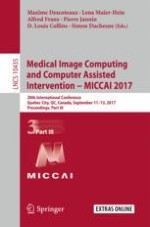2017 | Supplement | Buchkapitel
Predicting Future Disease Activity and Treatment Responders for Multiple Sclerosis Patients Using a Bag-of-Lesions Brain Representation
verfasst von : Andrew Doyle, Doina Precup, Douglas L. Arnold, Tal Arbel
Erschienen in: Medical Image Computing and Computer Assisted Intervention − MICCAI 2017
Aktivieren Sie unsere intelligente Suche, um passende Fachinhalte oder Patente zu finden.
Wählen Sie Textabschnitte aus um mit Künstlicher Intelligenz passenden Patente zu finden. powered by
Markieren Sie Textabschnitte, um KI-gestützt weitere passende Inhalte zu finden. powered by
